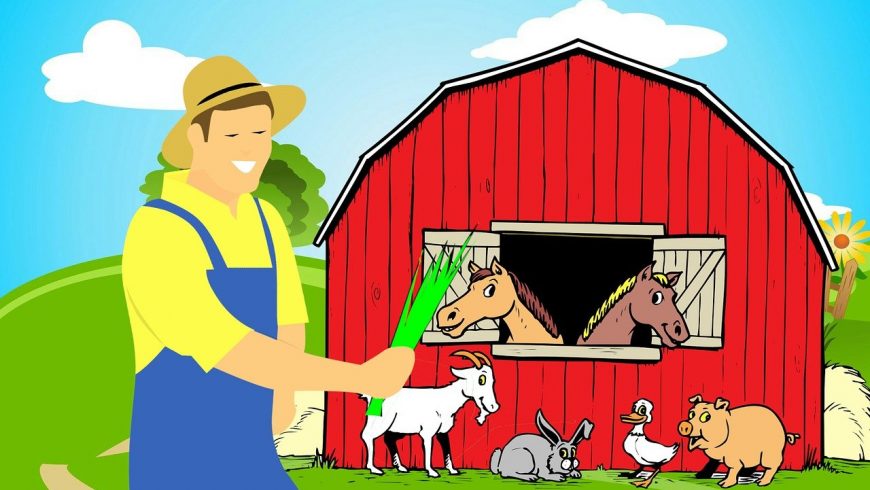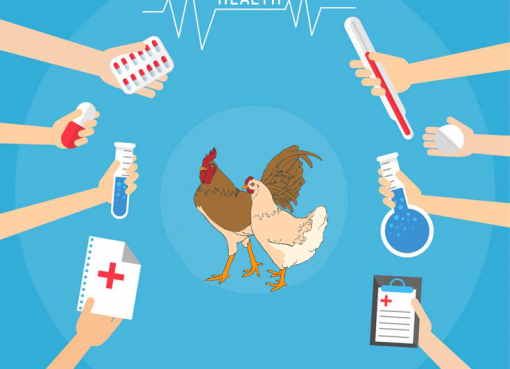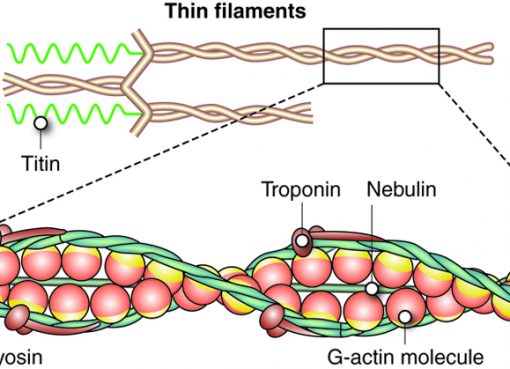Dr. Prerona Patowary
Dept. of Veterinary Clinical Medicine, Ethics & Jurisprudence
College of Veterinary Science, AAU, Khanapara
Email: preronapatowary@gmail.com
Introduction
The performance, health and well-being of an animal are greatly influenced by the environment it lives in. The advancement in the sophisticated technologies has increased the dependency of producers or farmers on them to improve the productive and reproductive performance of the animals. Only a few farmers are concerned for the improvement in the general environmental condition of the animals, which also impact the occurrence of reproductive and production problems significantly increasing the production cost. Environmental stress is a significant factor affecting livestock handling and production, as it is closely related to the pathogens and the infectious agents that can degrade the animal’s health. It is not limited to the climatic factors but also includes nutrition, housing and any other stimuli that require an animal to adapt to new circumstances, which may have a detrimental effect on the animal’s reproductive health.
Types of stress
- Heat stress – Reproductive functioning of both male and female animals is highly affected by heat stress (solar radiation, wind speed, air temperature and humidity). In females, stress activates the hypothalamic-pituitary-adrenal (HPA) axis, which excites the pituitary to release adrenocorticotropic hormone (ACTH) which further stimulates the release of glucocorticoids and catecholamines to alleviate the effect of stress.
Effects:
- In females – Heat stress impairs the reproductive tract’s physiological function resulting in hormonal imbalances, decreased estrus intensity and sexual behaviour, impaired follicular development and growth, low-quality oocytes, decreased fertility and conception, impaired embryonic development and survivability, and an increase in days open.
- In males – The testicular temperature must be 4-5°C below the rectal temperature. Heat stress disturbs the testicular thermoregulatory mechanism causing increase in testicular temperature, impairs the spermatogenic cycle, decreases semen volume and sperm concentration, increases sperm abnormality and cytoplasmic droplet, decreases sperm motility, increases dysfunctions of sperm membrane and mitochondria, poor semen quality and decreases fertility.
- Nutritional stress – Long-term nutritional stress results in poor body condition, as blood flow to various internal organs including the uterus, fallopian tubes and ovaries is reduced, thereby reducing fertility. It has been discovered that allantoic fluid’s chemical constituents and the embryo of an underfed female degenerate. Females who are nutritionally deficient have a paler corpus luteum. Females’ feed intake is also affected by hot climatic conditions, as consumption is reduced and the body receives insufficient nutrients which lead to ovarian malfunction. Additionally, if animals suffering from heat stress are maintained on low-quality roughages, the added stress of heat increment feeding will occur; therefore, nutritionally balanced and easily digestible feeds with protected fat and limiting amino acids may help to alleviate this additional heat increment feeding stress.
- Handling stress – Animals can also become stressed as a result of improper or rough handling. The manner in which livestock and animals are handled can result in unnecessary handling stress, which can have an adverse effect on the biological mechanisms of reproduction and immune response. On the other hand, electrical bites, immobilization and other stress factors may weaken the female reproductive functioning. Additionally, numerous factors such as excessive mobilisation of inseminated females, prolonged isolation of animals and mobilisation of animals for various purposes can degrade an animal’s reproductive status.
Characteristics of stress in reproductive process
Environmental stress affects the critical physiological functions of animals including reproduction. Homeostasis is a vital function of the brain tissue and so when the body temperature is below or above the level of comfort, it decreases or increases the metabolic rate than normal resulting in imbalance in the body.
In male – Environmental stress can cause low sperm quality. Direct exposure of the testes to high temperature impairs the spermatogenic cycle.
In female – Environmental stress negatively effects the female reproduction. It is seen that a temperature rise in the uterus by 32.9°F decreases the rate of fertilization. Seasonal changes also effect fertility in lactating cows. Ryan et al. (1993) demonstrated that when animals’ rectal temperatures increased from 101.3°C to 104°C at 72 hours after insemination, pregnancy rates decreased by up to 50%. Additionally, nutritional stress causes oocyte quality to deteriorate in the early postpartum period resulting in abnormal embryos or their loss.
On embryos – Elevated temperatures have a detrimental effect on embryonic development (mainly 3-11 days after service). The greatest loss of bovine embryos from IVF occurs prior to 42 days, when the females are stressed by the heat.
Mitigation of Environmental stress:
- a) Caloric stress – Physical modification of the environment through –
- Adequate shade provision
- Evaporative cooling techniques such as misting water and forced ventilation as well as the use of spray and fans. Shading reduces the incoming radiant heat load by 30% or more and provides a productive advantage by shading feed and water. It is beneficial to identify heat-tolerant breeds (those with shorter hair, larger diameter hair, and a lighter coat).
- Hormonal treatment with GnRH or hCG via Ovsynch, CIDR synch, or Presynch also help to minimise heat stress. In addition to AI, embryo transfer can help reduce pregnancy rates in animals exposed to heat stress.
- b) Nutritional stress – Provision of balanced diet and ad lib. water; energy intake should be increased and fiber and protein should be decreased, feeding of feed additives to improve energy utilization; Vitamin E and selenium injections reduce rectal temperature and increase body weight in sheep during the summer. The inorganic chromium supplementation in the feed of buffalo calves improves heat tolerance and buffers are fed to prevent rumen acidosis.
- c) Handling stress – Provision of the required area per animal as well as free areas for comfort; bathing females before service; transportation in cooler times of the day; implementation of estrus synchronization; service should be allowed in less hot period; females should not be isolated long before AI or service.
Conclusion
Reproductive fitness may be the most critical criterion for studying or evaluating animal adaptation and its management has always been critical. Environmental stress has a significant impact on animals because it manifests itself through a variety of physiological mechanisms and has a detrimental effect on the animal’s reproductive status. It has always posed a significant threat to farmers because it has a greater impact on the reproductive life of livestock and can wreak havoc on a farm’s productivity and economic prospects. Appropriate mitigation strategies and scientific advancements should be implemented to negate the effect.
References
Alejandro, C.I.; Abel, V.M.; Jaime. O.P. and Pedro, S.A. (2014) Environmental Stress Effect on Animal Reproduction. J. Adv. Dairy Res. 2: 114. doi:10.4172/2329-888X.1000114
Gwazdauskas, F.C. (1985). Effects of climate on reproduction in cattle. Journal of Dairy Science, 68(6):1568-1578.
Ryan, D.P.; Prichard, J.F. and Kopel, E. and Godke, R.A. (1993). Comparing early embryonic mortality in dairy cows during hot and cool seasons of the year. Theriogenology, 39: 719-737.




